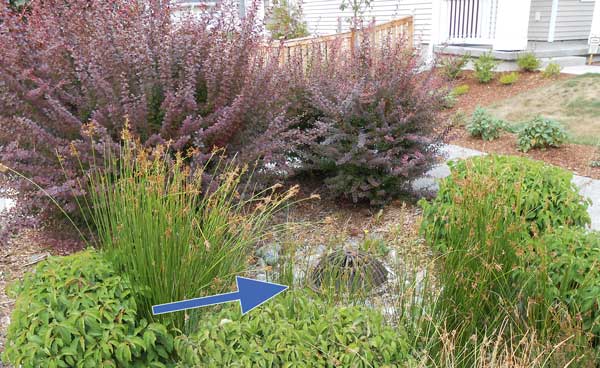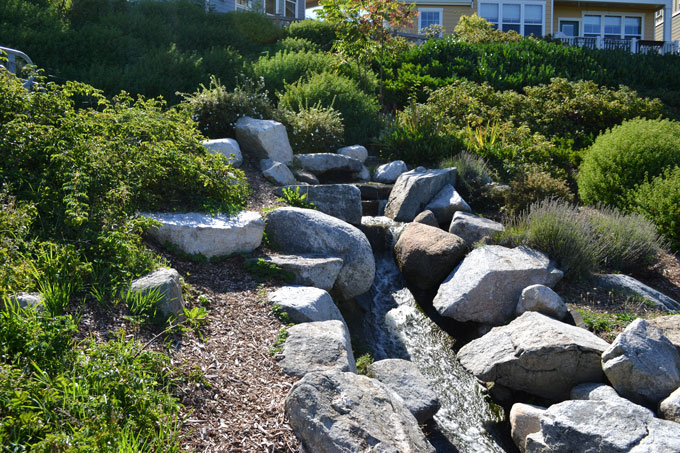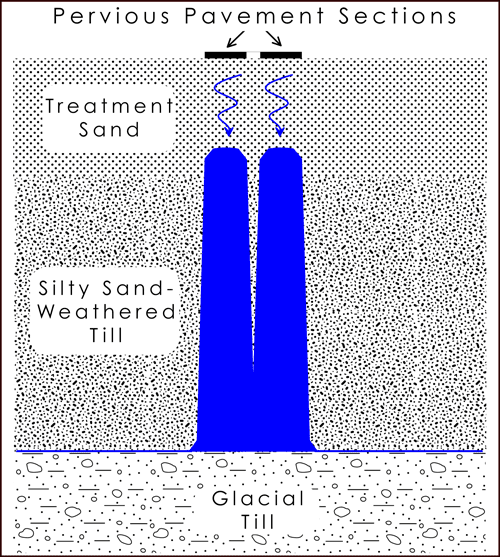Stormwater Infiltration Evaluation and Design
Management and discharge of stormwater runoff is becoming a challenge as municipalities try to reduce loads on wastewater treatment plants, reduce combined sewer overflow, and provide improved water quality discharging to streams, lakes, and marine environments. Additionally, concepts like Low Impact Development (LID) and Green Stormwater Infrastructure (GSI) are increasingly becoming mainstream in an attempt to reduce the impact of the development footprint on the environment. Infiltration of stormwater is one of several methods currently being used to return water naturally to the environment to increase aquifer recharge and baseflow to streams, and to improve water quality prior to discharge to surface water receptors.

High Point rain garden with overflow port
Richard has been on the forefront of stormwater infiltration testing and design, including such projects as the High Point Redevelopment project in Seattle, Woodland Park Zoo penguin exhibit, and City of Issaquah Highlands. Currently, Richard is a member of several different consulting teams working for Seattle Public Utilities on multiple projects including revising the City’s Stormwater Code, providing program management for Green Stormwater Infrastructure projects, and evaluating and designing infiltration systems for the Ballard and Delridge neighborhoods.
Stormwater Infiltration Project Examples:
High Point Development for Seattle Housing Authority
and Seattle Public Utilities

Treated water flowing from High Point rain gardens
The project involved evaluation of low-impact drainage options to control runoff from an urban housing development using a natural systems modeling approach, and was one of the first of its kind in the United States. Richard evaluated existing soil and groundwater conditions to assess the ability of the site to infiltrate stormwater. He designed and tested a soil mix for drainage swales to enhance infiltration and treatment of stormwater and convey the treated water from the site. He then developed a numerical model to evaluate the movement of water through the engineered soil and estimate the rate of inflow to the conveyance system as a function of the percent of vertical saturation of the soil. Richard also assisted in development of technical specifications for the engineered soil mix. The project has been a huge success, meeting the pre-design goals for reduction of stormwater flows to the sewer system.
Rose and Sons Development for Team4 Engineering
The Rose and Sons Development Project is a new housing development proposed in Kitsap County. As part of the pre-design stormwater management plan, Richard completed a soil and groundwater evaluation to determine the feasibility of infiltration at the site.

Results of modeling showing groundwater mounding
In addition, an infiltration mounding analysis was performed to evaluate the potential for buildup of water beneath pervious (porous) pavement areas that could reduce the infiltration capacity of the pavement. The modeling results indicated that mounding beneath the pervious pavement would be less than 4 feet. Outside the area, mounding would decrease to near pre-infiltration conditions approximately 20 feet from the downslope edge of the pavement area. Additionally, the modeling indicated a minimum of 18 inches of treatment sand is required beneath the pavement.
